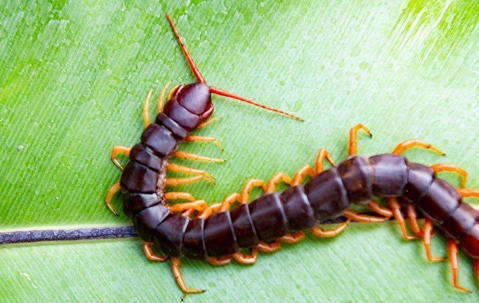With their many legs and long bodies, centipedes can invoke creepy-crawly shivers in anyone. Below, we'll break down everything you need to know about preventing and controlling centipedes in your Queen Creek home. You'll learn about their life cycle, their bite (not as bad as you may think), prevention methods, and when to call local pest control.
The Life Cycle Of Common Centipedes
Before we dive into prevention and control methods, we'll talk a bit about centipedes in Queen Creek. These critters go through a life cycle like other insects, consisting of egg, larva, pupa, and adult stages.
Centipede eggs are laid in damp and hidden spots, making it vital to keep your home dry and well-ventilated. Once they hatch, the centipede larvae grow and develop, eventually reaching adulthood. In this phase, they become those leggy, long insects you might find scuttling around your home.
Centipedes Aren't As Dangerous As They Look
While centipedes might look scary, especially with their many legs and venomous fangs, they're generally not dangerous to humans. Most centipede species found in Queen Creek are too small to inflict significant harm to people. They primarily use their venom to subdue prey like insects and spiders.
However, centipede bites can be painful and cause localized swelling and discomfort. Some people might be more sensitive to centipede venom than others. So, it's always best not to handle them to avoid centipede bites. If bitten, clean the wound and apply an antiseptic to prevent infection.
Tips For Preventing Centipedes From Entering Your Home
Now that you understand centipedes in general let's focus on preventing these pests from invading your Queen Creek home. Here are some steps you can take:
- Centipedes thrive in damp conditions. Ensure your home is well-ventilated, and use dehumidifiers in areas prone to moisture buildup, like basements and bathrooms.
- Centipedes can squeeze through tiny openings. Inspect your home for cracks, gaps, and holes in walls, doors, and windows. Seal these entry points with caulk or weatherstripping to keep centipedes out.
- Keep your home clean and clutter-free. Centipedes love hiding in piles of laundry or under debris. Regular cleaning and decluttering can help deter them.
- Centipedes often come indoors in search of food. Minimize outdoor lighting, especially near windows, as it can attract insects, which, in turn, attract centipedes. Use curtains or blinds to block light from shining outside.
- Maintain a tidy yard by trimming bushes and shrubs away from your home. Clear out leaf litter and keep the grass mowed. These steps will reduce hiding places for centipedes and their prey.
- If you use firewood, store it away from the house and on a raised platform. Centipedes can hide in wood and hitch a ride indoors when you bring the wood inside.
- Encourage natural centipede predators like birds and ground beetles by providing bird feeders and planting flowers that attract beneficial insects.
Centipedes might look intimidating, but they are generally harmless to humans. By understanding their life cycle and implementing preventive measures, you can keep these critters out of your Queen Creek home.
Call In The Pros For Total Centipede Elimination
It might be time to call professionals if you've taken all the preventive measures and are still dealing with a huge centipede infestation. Pest control experts have the knowledge and tools to remove centipedes from your home.
Pest control services can assess the severity of the infestation, identify entry points, and implement targeted treatments to eradicate centipedes. They can also provide ongoing maintenance to prevent future infestations.
Don't hesitate to call Pro Active Pest Control for total centipede elimination when all else fails. With the right solutions, we can keep your home centipede-free together.

